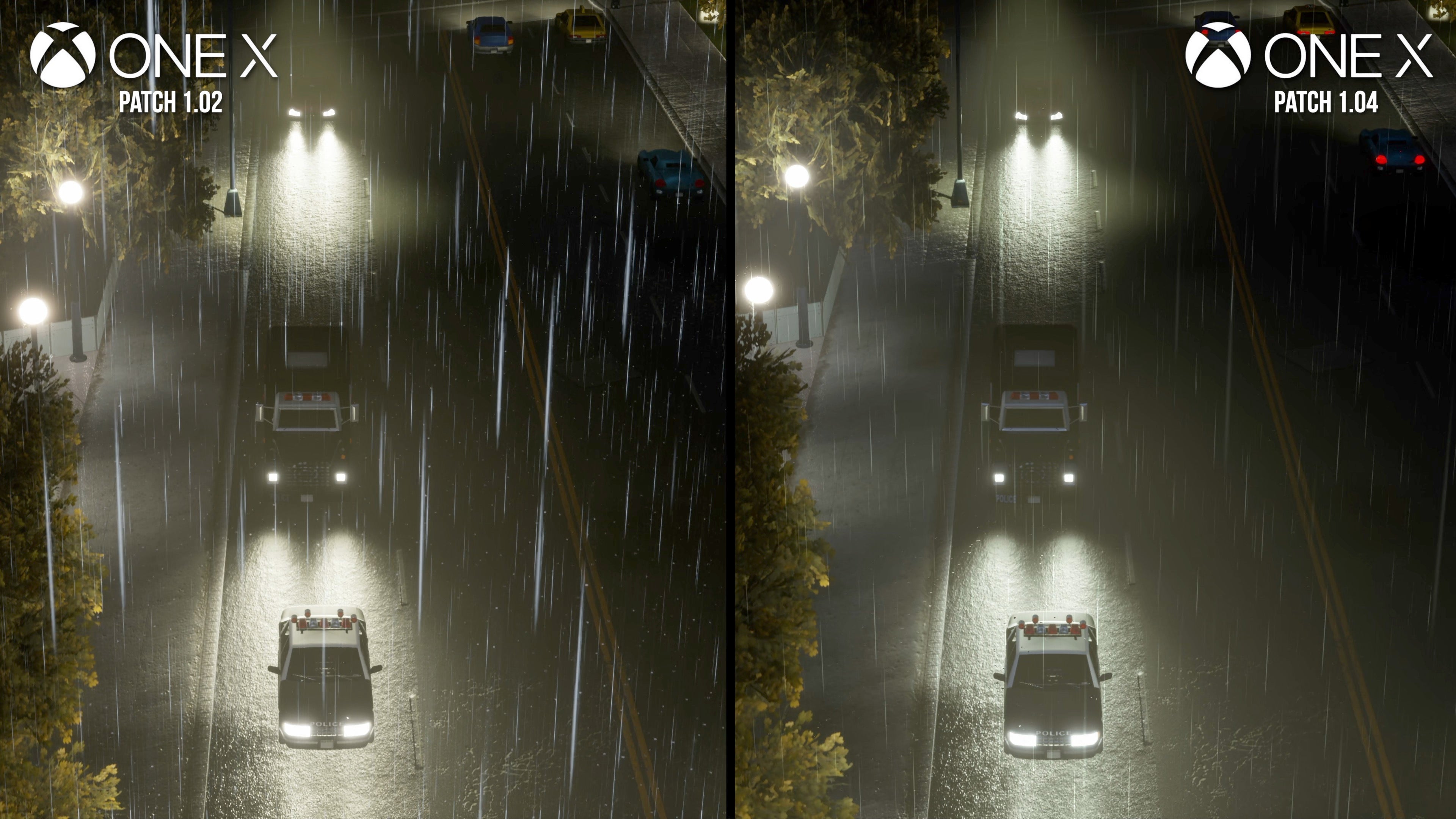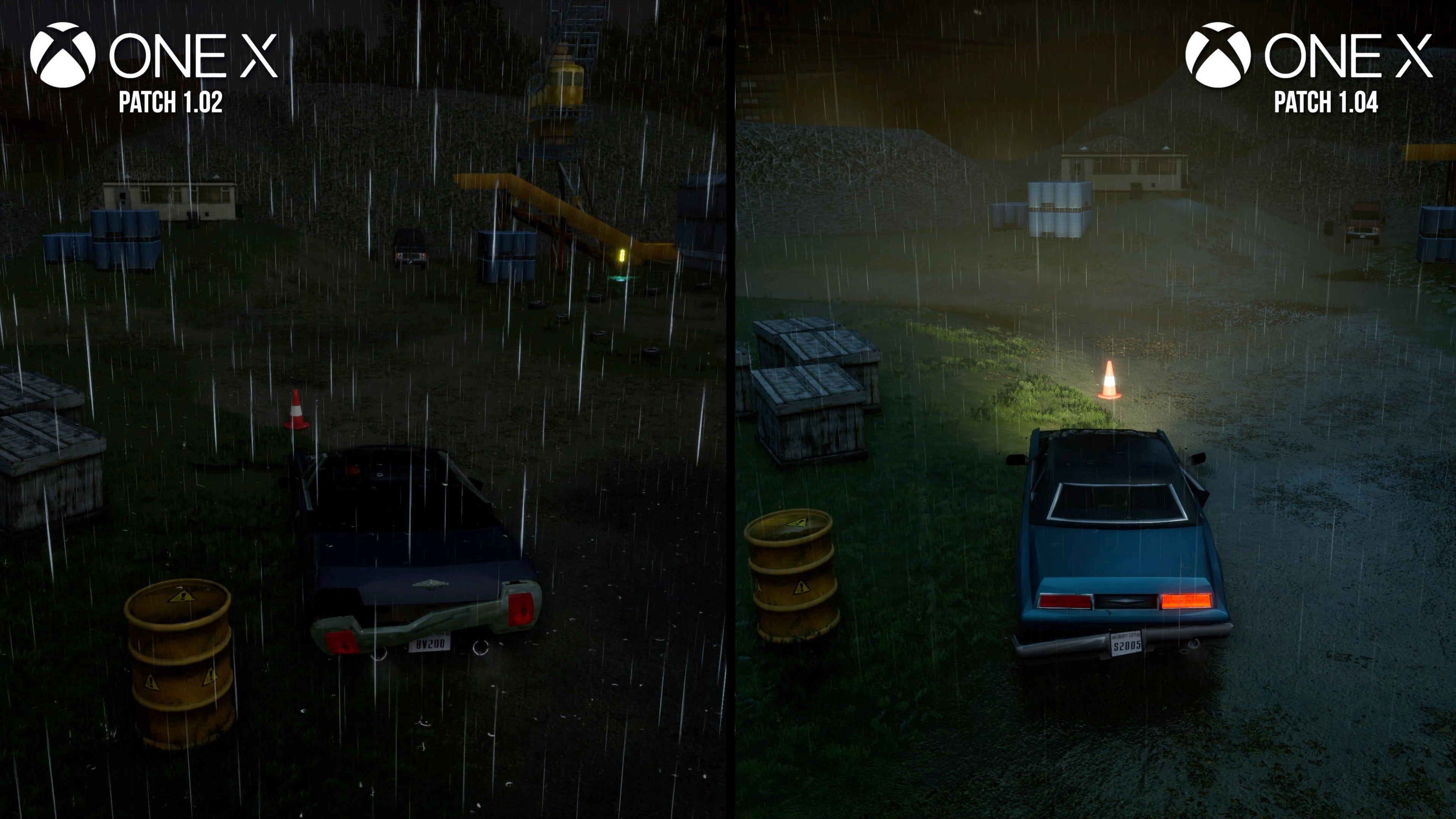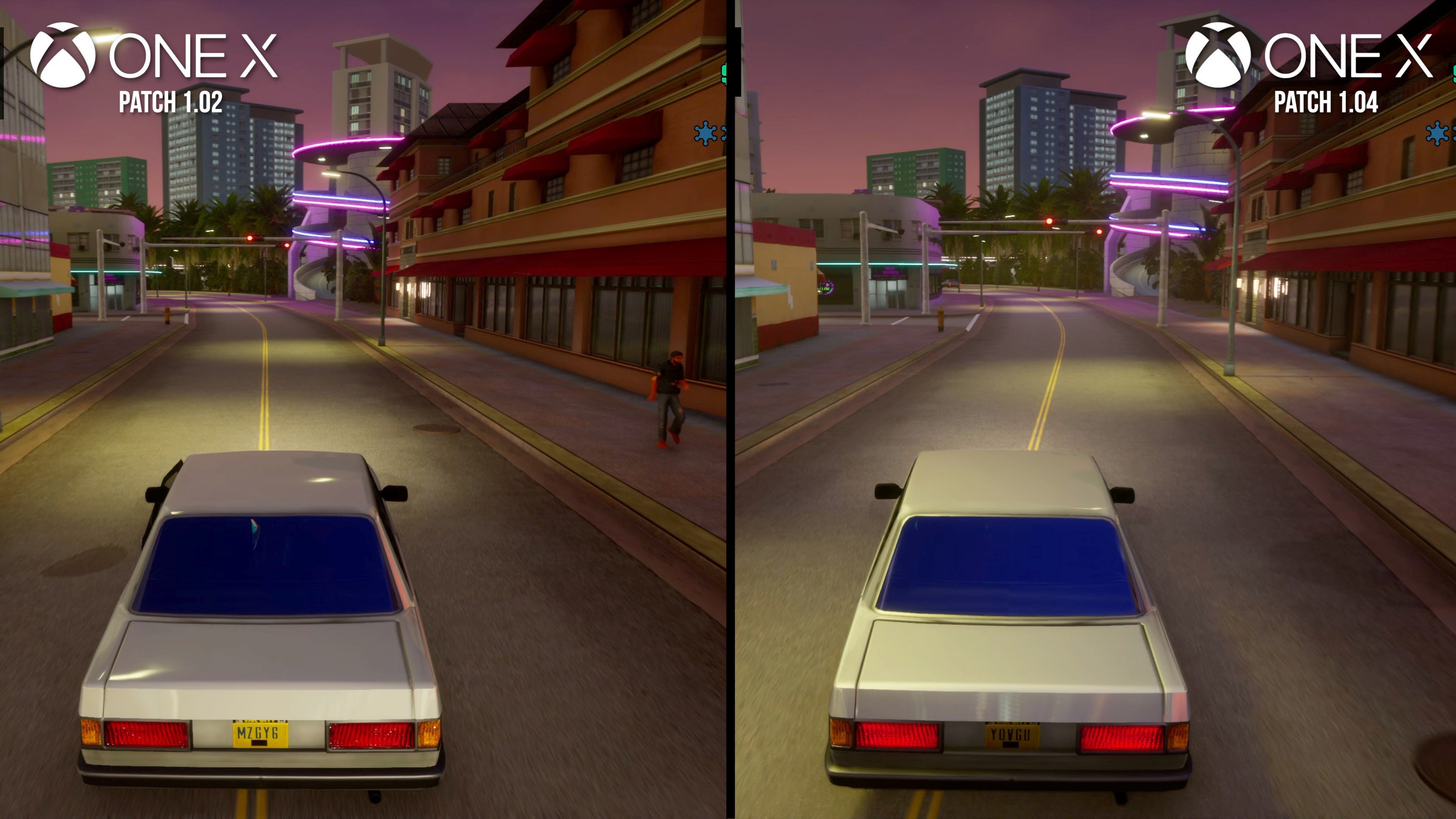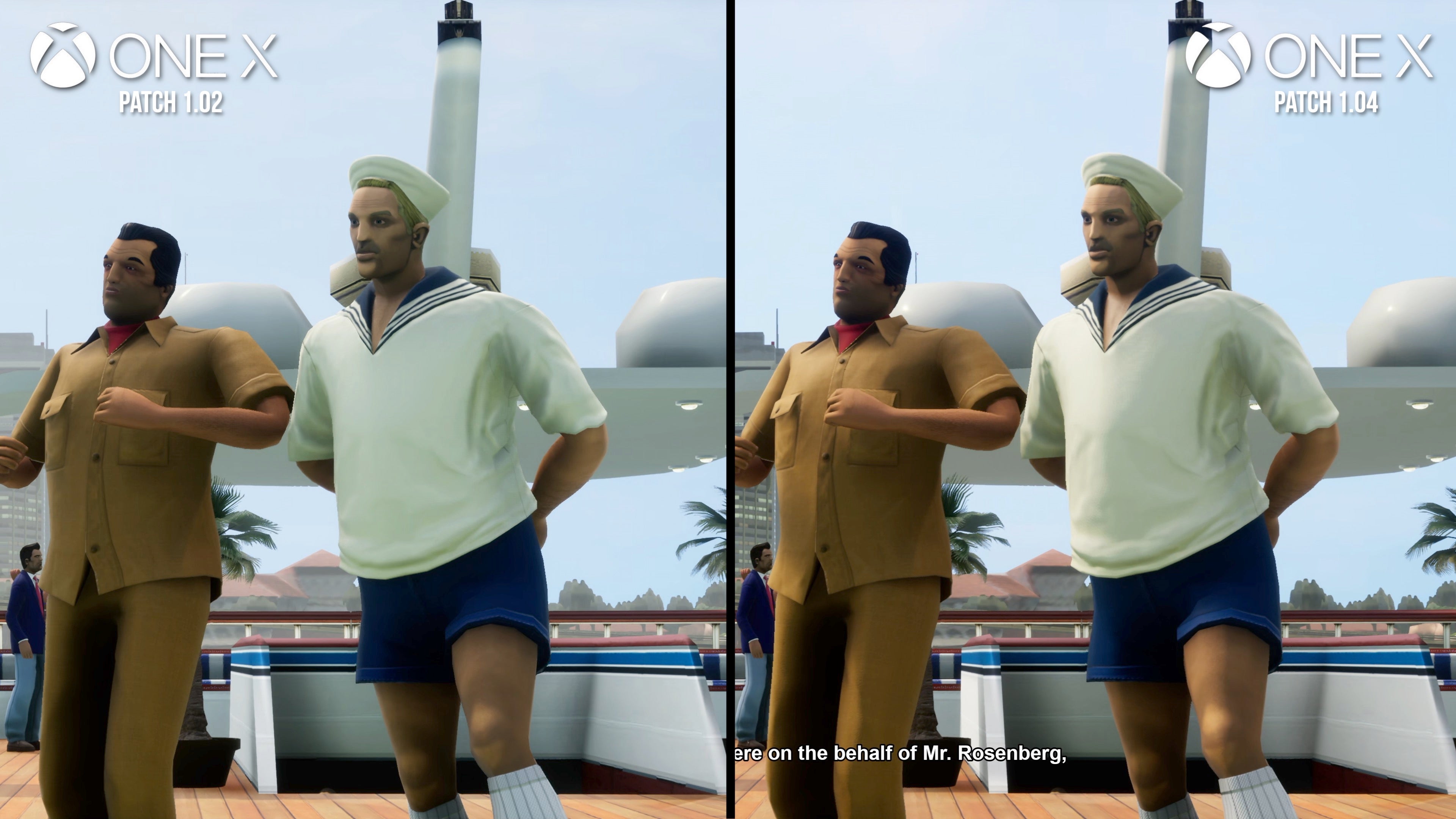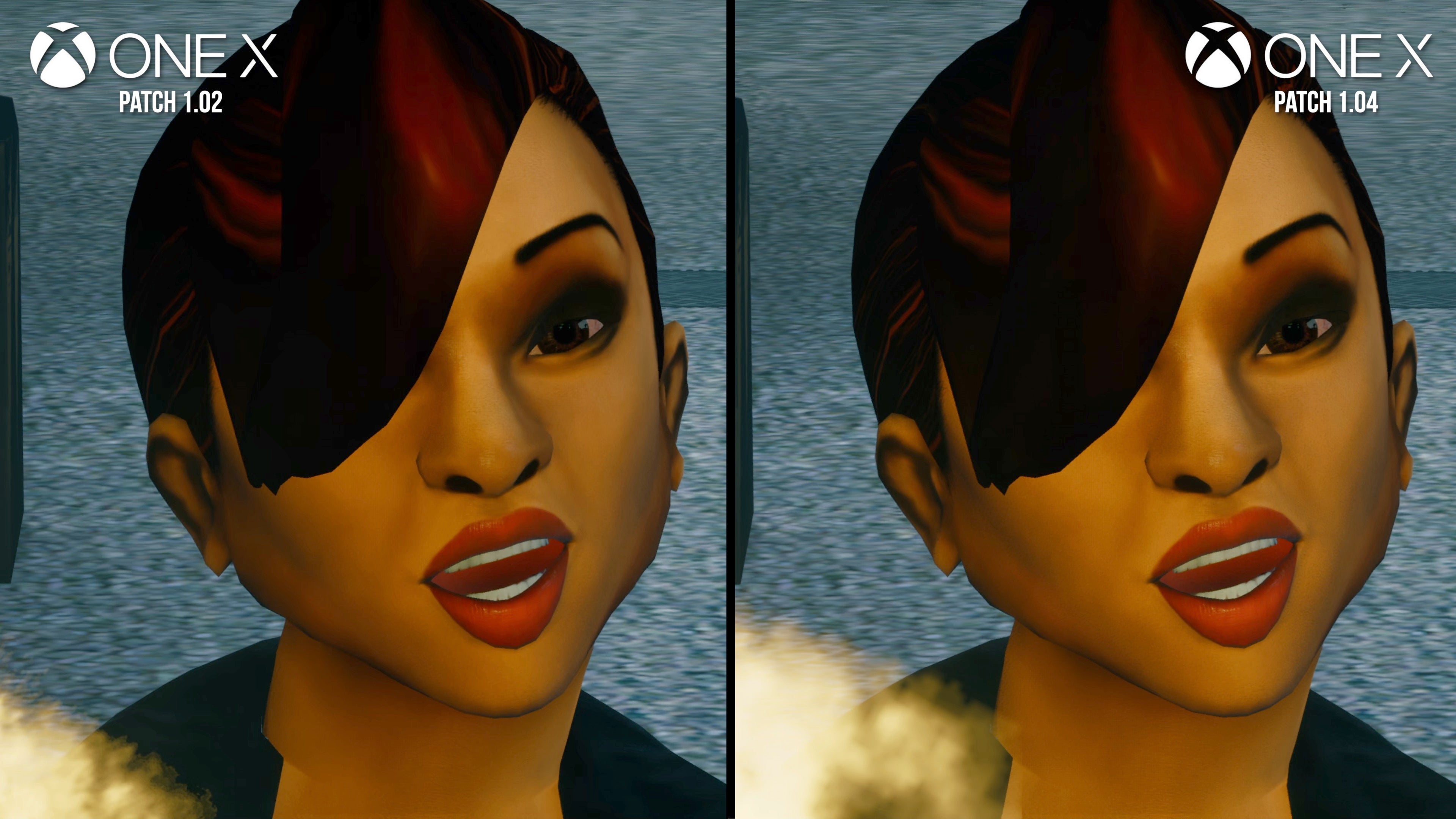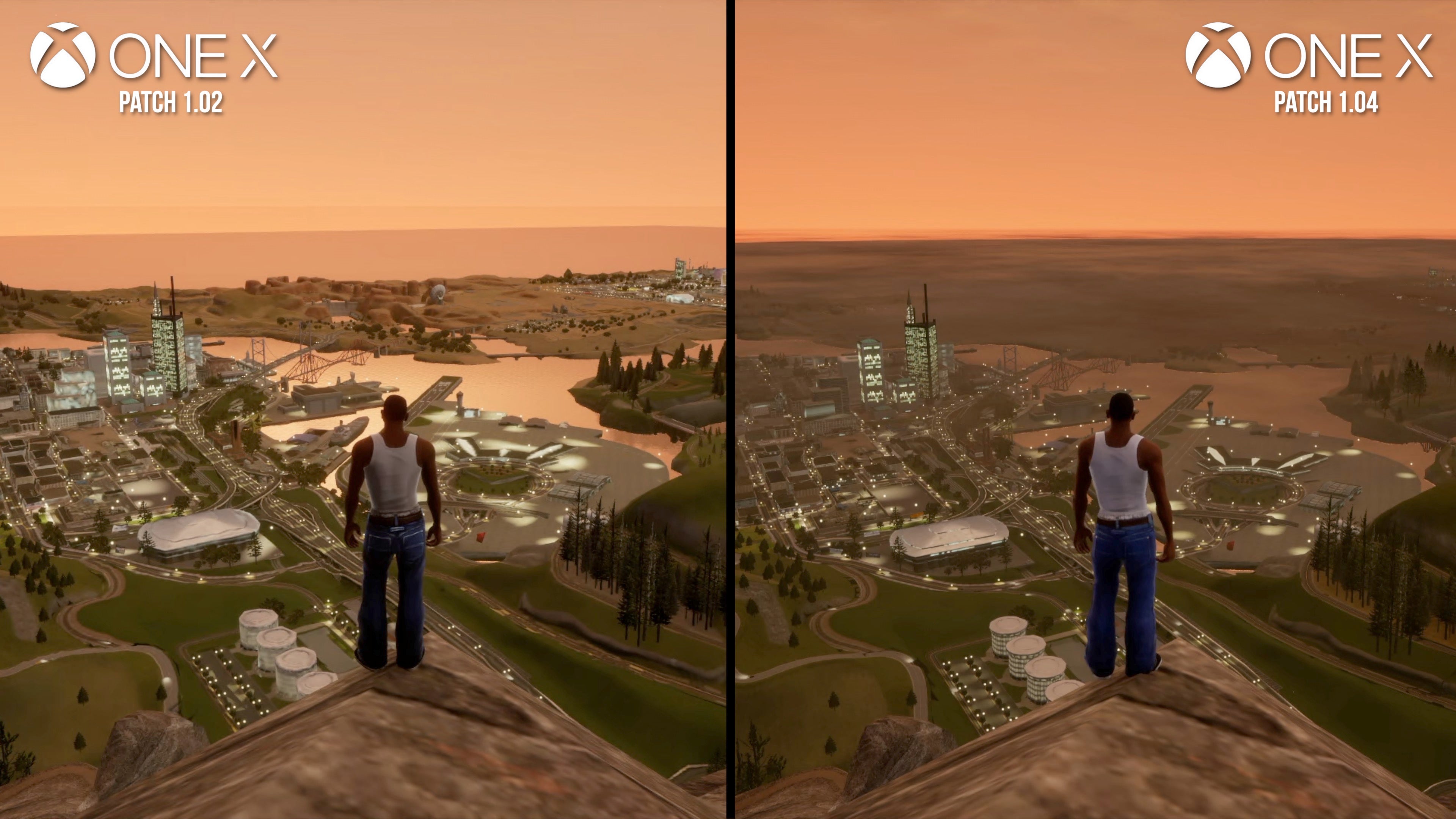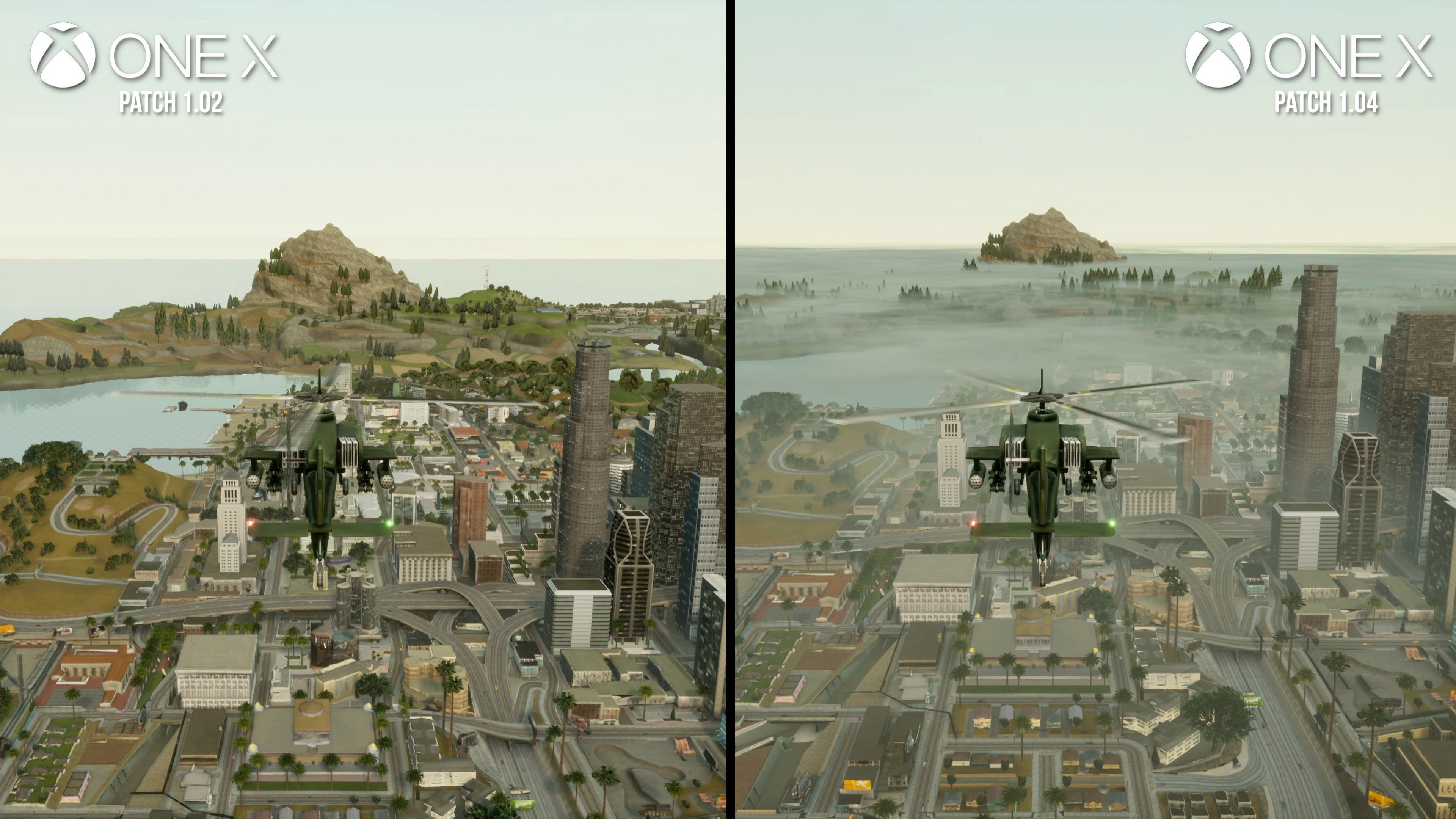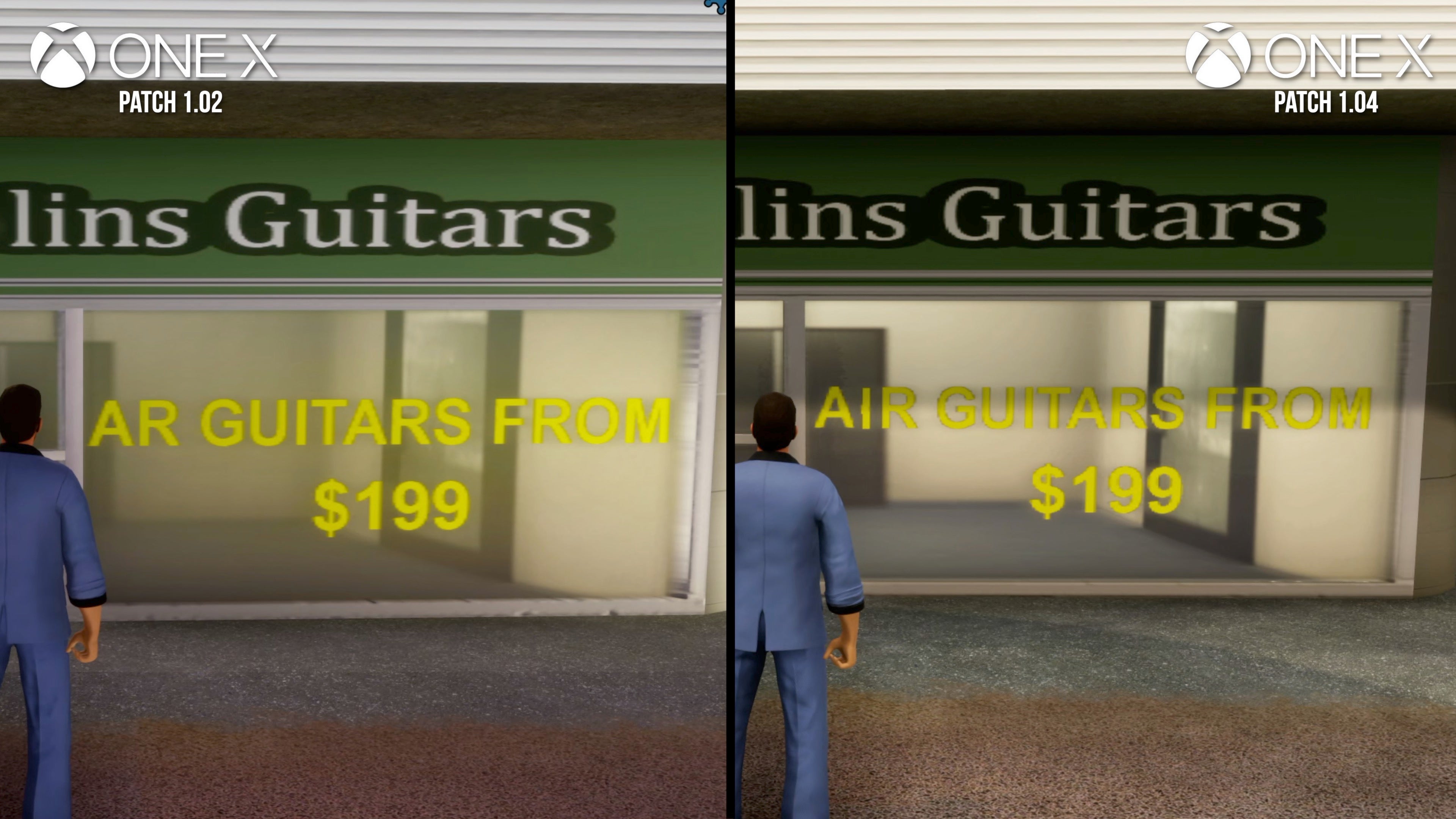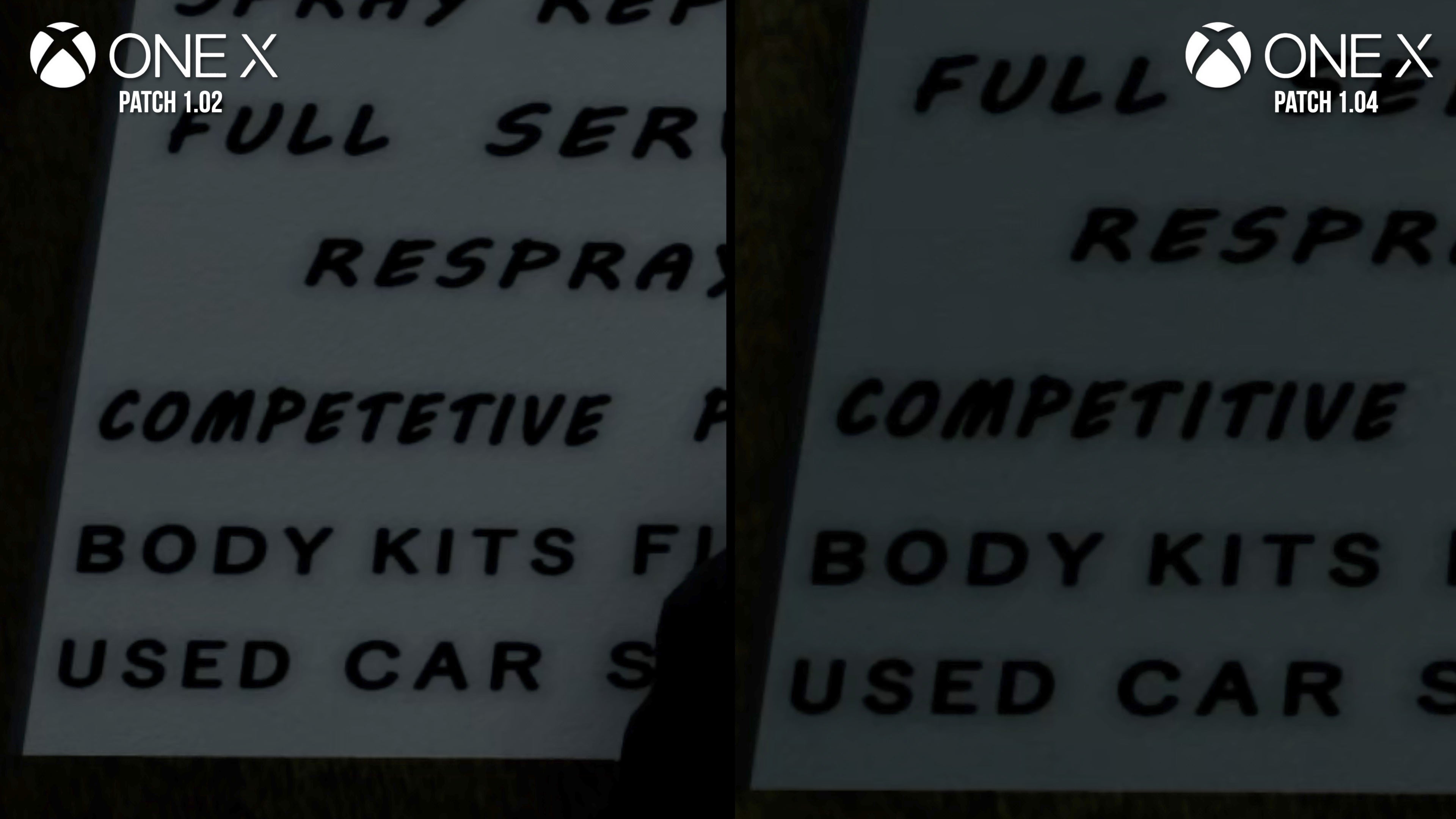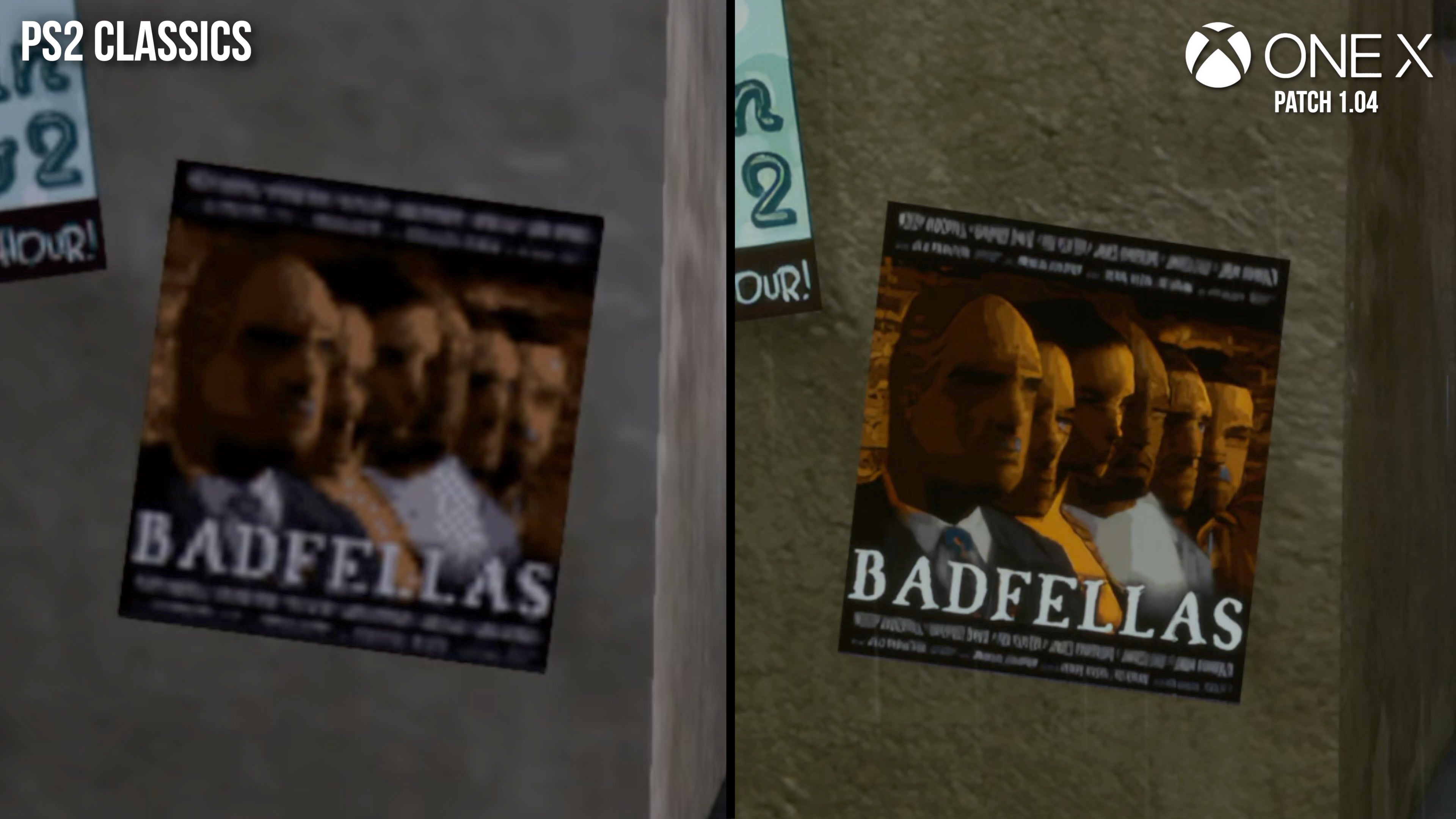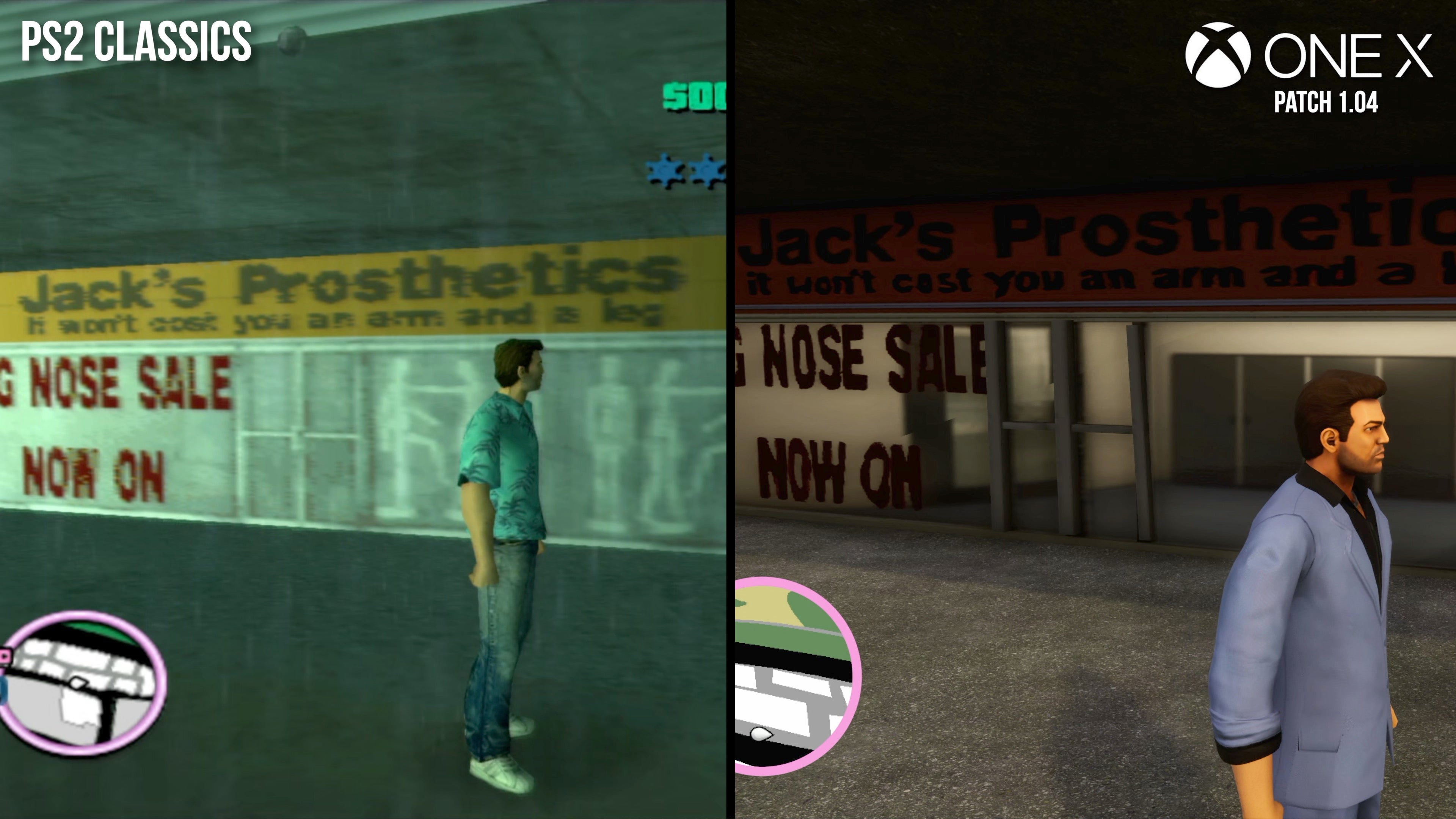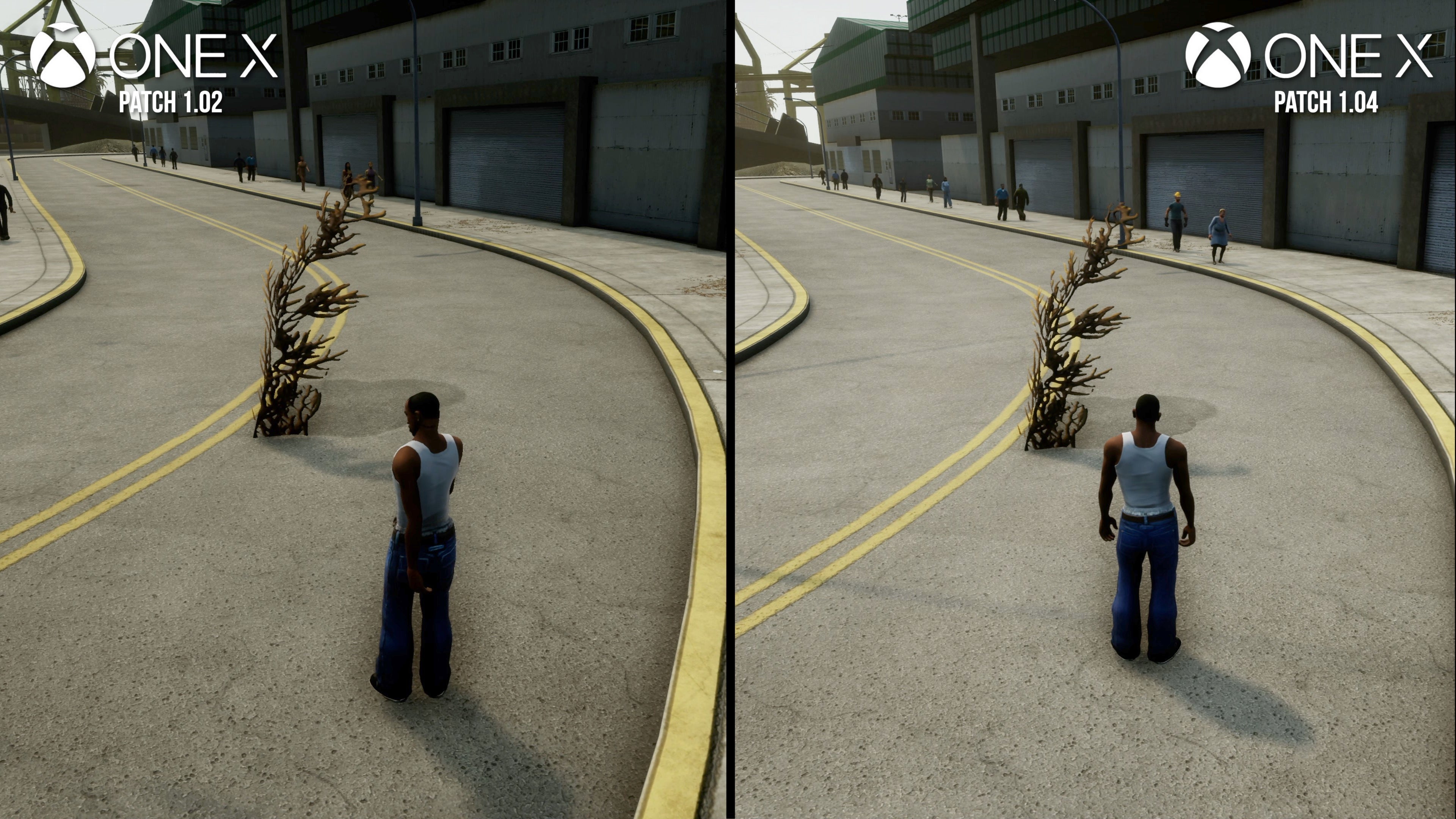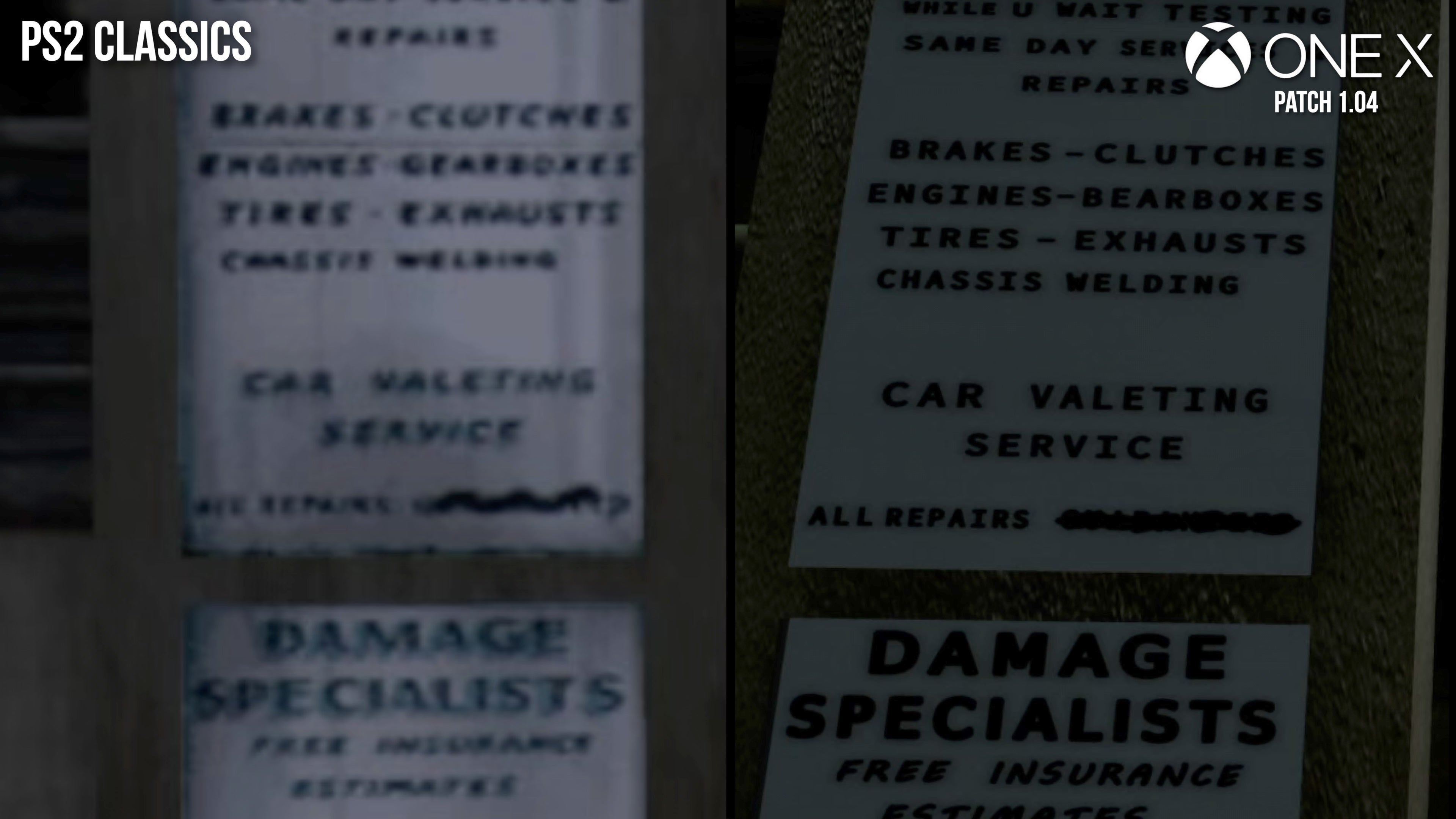Before tackling the various visual and performance issues we encountered, it’s worth talking about overall game stability: I didn’t notice many bugs this time around. Most of the collision issues and problems with missions seem to have been resolved, as evidenced by granular level of detail in the patch notes. I did spot a couple of issues though - one cutscene that froze in place, and geometry that refused to draw in, but overall stability through the run of play is clearly much improved. Many of the most egregious visual effects have been addressed too: the rain effect, for instance, has been comprehensively improved. The original release had very, eye-searingly bright rain that sorted behind water surfaces, penetrated overpasses and could even be observed within vehicle interiors. It was eye-searingly bright and was difficult to see through at times, particularly given the relative darkness of the game during the night. These errors are fixed and transparency is ramped up, giving a somewhat more realistic look. Fundamentally, the rain effect still appears to be a volume of rain that travels with the player - so rain drops never change their horizontal position relative to the player camera, even during fast movement. Critically though, the rain no longer seems to track with the player’s vertical velocity. This was a curious issue best observed in San Andreas, where diving in a jet would see the rain basically freeze in place. This has some basis in physics but still looked really strange in practice, as the rain was still clamped to the player’s horizontal movement. Patch 1.04 solves this problem completely, with the rain now descending at a fixed rate regardless of the player’s velocity. Perhaps some sort of middle ground would have worked well here but I think this is a substantial improvement over the original. Speaking of San Andreas, one of the most annoying and off-putting visual issues with that game was the way the game looked from altitude. There was no haze or approximation of atmospheric scattering, which made the game world look incredibly small. Plus, the edge of the map was clearly visible, with the water clearly stopping at some point not too far off the San Andreas landmass. Again, patch 1.04 fixes this and a ground haze option enables a low-lying fog/haze effect that obscures distant geometry, giving the world a much more appropriate sense of distance and atmosphere. As a bonus, it looks sort of similar to the way these effects rendered in the PS2 original, although unlike in the PS2 release you can fly far above them here. More good news: many of the Definitive Edition’s terrible spelling errors have been fixed - though not all of them, by any means. Meanwhile, most of the reversed textures that plagued the game now appear to render the right way around - though I still managed to spot a couple of doorways with backwards labels. I’ve saved the best news until last because on the current-gen consoles at least, all of the GTA titles run at 60 frames per second in their performance modes, with only minor dips - a vast improvement over launch code. It’s not perfect: fast driving can cause a little stutter, while certain cutscenes also exhibit some slowdown. Stress-testing the game with explosions and alpha effects can pull frame-rates into the 50s on all current-gen consoles but this isn’t typical of most gameplay. The PS5 versions had a bizarre issue at launch where frame-rates were impacted by using fidelity mode’s volumetric clouds and screen-space reflections, which partially explains that console’s improved outlook - but overall, there’s an across-the-board boost here. Unfortunately, the fidelity modes remain pretty much where they were at launch, pegged to 30fps but plagued by off-putting frame-pacing stutters. I’d recommend sticking to the performance modes, even though you do lose volumetric clouds and rain puddles. At the very least, 30fps is 30fps on PS5 and Series X, at least. Bizarrely, I did spot a couple of instances where Series S would drop into the 20s for a few moments. Still, performance in these titles is much improved as of the latest patch. Fundamentally, this forms the key value proposition of the current-gen releases as they stand now. These older GTA titles are difficult to find in reasonable form on contemporary hardware - there’s the glitchy and touch-based mobile phone versions, the horribly frame-paced PS2 Classics releases, the original PC games, which can be challenging to run on modern computers, and the seventh-gen console ports of GTA San Andreas, which inherit all the issues with the mobile phone releases. With that in mind, GTA Definitive Edition isn’t a bad way to enjoy these games, at least if you don’t want to deal with headache-inducing technical issues. I’ll talk about the remaining issues shortly but overall, they run well - on current-gen consoles at least - and they have had a handful of their most glaring problems fixed. On top of that, they have modernised, revamped controls that compare favourably to the original releases, while the deployment of UE4 leads to some nice effects work. However, with that said, I can’t help but feel that there’s still so much work to be done on these games. Some obvious flaws still stick out. Grass, for instance, is still misaligned throughout the remasters - with various areas in Vice City exhibiting grass that juts out at odd angles and hovers over the ground. Plus, I managed to catch a couple instances of foliage emerging out of nowhere in San Andreas, while some of the ground clutter in GTA 3 is still suspended above the ground. Ambient occlusion is still really, really strong. Thick outlines surround every piece of geometry that comes anywhere near a wall or other surface. Pedestrians, for instance, often present with a dark glow. SSAO should be an easy visual win for the remaster - a cheap way to add ambient shading that would have been impractical to replicate on the PS2 - but the implementation is really over-the-top. There some are inconsistencies with material properties too, the shiny beach from Vice City still looking poor. Grassy surfaces and roads also exhibit an odd sheen at times. Physically-based rendering is obviously a new addition and it often looks perfectly reasonable, but there are some glaring exceptions. There are also problems that are more fundamental to the visual design. Characters and animation are a particular sore spot: NPCs are rounded off with additional geometry and sport new materials work, giving them a strange appearance. In motion the results are often comic - the characters look like sculptures and the animation data was clearly not built for models at this level of fidelity. A substantial overhaul here is probably outside the scope of a typical post-release patching effort but the characters still don’t hold up at all. And while there have been improvements in the texture work, it’s still far from being good enough, with severe consistency issues and obvious errors, even six months out from release. Going back to the PS2 originals, texture quality obviously doesn’t stand up to close scrutiny, with many textures just 128x128 pixels in size. On original hardware on a CRT it looks decent enough but blown up to high resolution - as in the PS2 Classics versions on PS4 - texture quality simply isn’t good enough. The remasters use three general techniques to bring texture quality up to modern standards. AI upscaling is used frequently, which is a technique that uses machine learning to smartly enhance and clean up detail in the low resolution source artwork. The second technique sees the developer redraw the assets, mimicking the original art but at far superior resolution. Finally, other assets are simply replaced with new art that can look quite different - often lacking the quality and style that went into the original game. The AI upscaled artwork mostly looks fine but never really sits that well at high resolutions, simply because the original art assets are simply lacking enough detail for the algorithms to effectively work with. The results are serviceable enough, and can actually look passable in some areas, but often look grimy and messy. The AI clearly has an issue with text too. Yes, many of the errors were fixed, but many issues remain. Why wasn’t this text redrawn? It seems like the bare minimum of attention to detail would have been enough but alas we are left with some ugly upscaled textures. AI upscaling itself is a useful technique in game remastering efforts and works very well in the Mass Effect Legendary Edition remasters, for instance, but the source material has to meet a minimum threshold of quality that much of this artwork does not. These issues are particularly curious given the fact that higher resolution artwork is actually available for these titles, artwork that doesn’t seem to have been used for these remasters - but can be easily observed in the Grand Theft Auto Double Pack released for the original Xbox. In addition to reworked models, animations, and reflections, these ports of GTA 3 and Vice City included higher resolution textures for many surfaces. These are a mix of redrawn and resampled textures and crucially they offer much higher detail than those available on PS2 - up to 4x the resolution. I spent some time using Topaz AI software to upscale the Xbox assets and they easily surpass the efforts found in the Definitive Edition. There’s one final issue with the artwork and it’s tough to forgive. There are still spelling and grammatical errors present in these remakes - despite many of the most obvious issues having been fixed, but oversights remain. “Gearboxes” is still “bearboxes”. “Screamin’ Collins” still doesn’t have the apostrophe. These appear to be redrawn assets that have been mis-transcribed. Some of the AI upscaled artwork has problems too. “Tiny” becomes “my” and “wood” becomes “mood”. Both jokes from the original are rendered incomprehensible as a result. Presumably the algorithm here is having trouble distinguishing these words but they are certainly very readable in their original renditions. Again, this shouldn’t have passed QA and needs to be redrawn - both to preserve the original meaning and to provide a passable level of clarity. Unfortunately, even if all these issues were corrected the textures still wouldn’t sit well within the environment, which leads us onto the core issue that is likely impossible to address. Because environmental geometric detail is largely unchanged from the PS2 releases, these textures are stretched over relatively large, relatively flat surfaces, making them look rather unrealistic. Oftentimes these give off the impression of an HD texture mod for an older title, with the polygonal limits of the source assets exposed. Some obvious normal maps do add in a subtle appearance of displacement on some surfaces but many buildings just look composed of perfectly flat planes. Everything just looks flat and barren which really undercuts the relative sophistication of the other rendering techniques here. I’m sympathetic at the enormous task in front of the development team - three massive games with a ton of textures to rework and enhance, but the results here simply aren’t up to par. Crucially, the disconnect between very old games and a brand new rendering engine produces visual discontinuities that just look rather odd - a world apart from the kind of remastering work done on titles such as Shadow of the Colossus, to name one example. All of which puts us in a strange spot because right now, if you want to enjoy these games there’s a good case that the Definitive Edition may be the best way to play them for most people - and fundamentally that’s a sad statement. These are some of the most critically acclaimed, best-selling games of all time and deserve better than this set of flawed remakes. Many of the issues are difficult to excuse, particularly the problems with character rendering and texturing. But in the absence of a remaster or a port with more respect for the source material, this is all there is. Grand Theft Auto’s Definitive Editions have improved, fixes have been made and bugs have been squashed but I think I’ve made the case that there’s still plenty more work to be done - and even then, even if these problems were address, I have to question whether the fundamental approach taken here was the right one.
